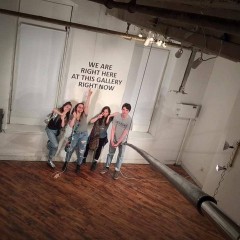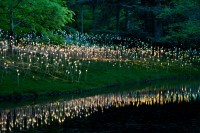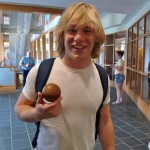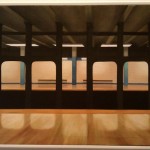Post by Clarissa Shanahan
Brookes Britcher is a hardworking guy. He’s a multi-disciplinary artist – working in photography, video, sculpture and larger scale installations – who’s also committed to creating a presence for other artists. In recent years, he’s been curating shows in alliance with several collectives, where he’s been shaking up the local, and not so local, scene, creating dynamic installations that feature up-and-coming artists.
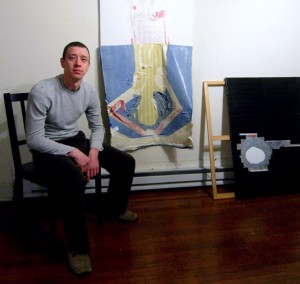
He’s a founding member of the Philadelphia-based curating collective Adaptation, and the director of communication at New Wilmington Art Association [NWAA]. His own work has been shown as far afield as White Box in New York, the Chicago Apparel Center and the Cranbrook Art Museum. His MFA is from Cranbrook, his BS from Drexel.
Clarissa – For clarification, I know that Adaptation is for off-site curation, however you mentioned a site in your West Philly house – does that still exist? if not, what happened to it?
Brookes – There was a rented house we converted into a project/gallery space at 39th & Locust which we used for a year or so. My longtime girlfriend, Laura, and I were looking for a change and planned on heading out to Chicago and picking-up activities there with some Mid-West artists. The recession hit and jobs were scarce to say the least, so we stayed here in Philadelphia. The house at 39th & Locust is still there, but occupied.
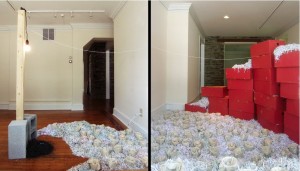
Clarissa – Where do you live these days?
Brookes – We live in the Graduate Hospital/Grays Ferry area now.
Clarissa – Your specific ‘ day job’ [for lack of a better way to put it]? is as Director of Communication at NWAA, and as Director & Senior Programmer at Adaptation, is this right?
Brookes – Director of Communication (NWAA) / Director (Adaptation). Both are undertakings that are labors of love at the moment. I pay my bills (and student loans!) by helping to manage an area restaurant kitchen 40-50 hours a week.
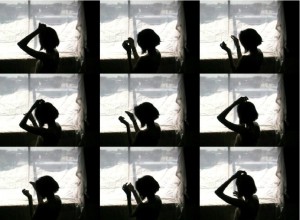
Clarissa – What is really exciting to you?
Brookes – What excites me is seeing a project or exhibition realized the night before it opens. It is a moment when it still “belongs” solely to the collective effort of the people who participated in realizing it. I am not quite sure why, but it has always been a powerful moment for me during the course of a project.
Those kinds of grass roots projects [like NWAA and Adaptation] are really what I’m drawn to – artists need support – and I understand this as someone creating things myself, but there needs to be people who are going out on a limb to help artists.
It’s a lot more fun for me to work in spaces that wouldn’t normally be associated with creative projects or are a little bit more dynamic, and that’s kind of what Adaptation started as and it’s very evolving, with an ever-changing direction.
Clarissa – Would you say that you’re more interested in curating than in creating your own work?
Brookes – They certainly fuel each other. It is vital that I keep making though. I generally find the time no matter what is on my plate at a given moment. I am fortunate that the Stortz & Son toolmaking workshop in Old City has donated space in their building to house my studio. It has provided me the room to start developing some larger constructed pieces over a longer time-line.
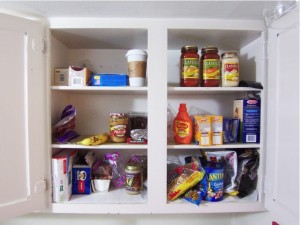
Clarissa – Among your many disciplines, you’ve moved from photography towards installations, particularly using found objects. How has this evolution come about?
Brookes – Everyone understands photographs, so there’s a built in relationship – to the act of taking it, the act of seeing it, the act of saving it. So as an artist, I think they’re a really powerful tool, and a really powerful medium to use to connect people.
The ideas in a photograph can definitely exist in an installation capacity. My thesis piece kind of brought all of those things together as a sculptural object, these kinds of objects which had function and were obsolete – not in their function necessarily, but as far as, there’s a new refrigerator, there’s a new car – they can still function and work, but in the course of family life they’ve kind of lost their luster and lost their importance.
It brought about, for me, a new comfort level with working with physical objects, and became the reason that I started working with installations and found materials.
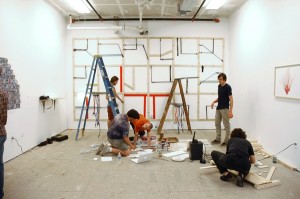
Clarissa – Which of the shows that you’ve curated is your favorite and why?
Brookes – The Rules For Staying Young [at NWAA in the spring–image above from an interactive installation in the show]. It brought together so many varied artists around a concept [baseball] that had an entry point for so many people. The response from the artists involved was so amazing and I think everyone was able to really “stretch” the audience’s idea of what work involving baseball could be.
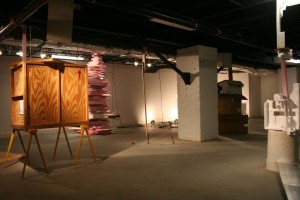
Clarissa – Are there any shows you’ve seen lately that have been particularly interesting?
Brookes – (I’m a little biased) but, I really loved the (NWAA) show Nie Struktur (a collaborative installation by Jim Zeske & Ron Longsdorf ).
The show was a collaborative installation response to a “new” space in Wilmington. The project really had a great feel – you could sense the overlap between the artists working together and they were able to create an experience that had a genuine dialogue with the space itself. I wish I had more time to spend thoroughly exploring all the amazing offerings from the countless Philadelphia venues each month. There is so much great work being made and shown here and in surrounding areas.
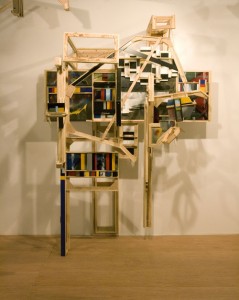
Clarissa – Who are some of the artists you’re excited about?
Brookes – I love the work of these artists : Daniel Potterton, Zachary Scholz, David Hendren, and Christopher Samuels. They all inspire me to get back to the studio!
Clarissa – Are you also in the process of getting the next installment of the Chestnut Hill Arts Initiative show up? I should clarify, the CAI is working to present artists’ work in available vacant commercial properties.
Brookes – Yes, the CAI Lessons show is coming up right now. It was proposed by Susan Braccia at the Academy in Manayunk. She’s been working on starting this initiative called Subject Art, which evolves consistently over time. It unites area arts educators to continually do exhibitions and workshops. We now have educators from the Chestnut Hill Academy, St. Josephs, Philadelphia University, and The Academy in Manayunk.
We have another show that’s just forming for Summer 2011, in partnership with the City of Philadelphia Department of Commerce ReStore Corridors Through Art initiative. The project aims to incorporate young and established artists from the region who are actively utilizing recycled materials, environmentally aware concepts and/or sustainable practices as part of their creative process and output – as well as to encourage artists to respond specifically to any outdoor space available for the project. The scope will certainly be Chestnut Hill, possibly Mt. Airy. Indoor windows & outdoor spaces.
Clarissa – You’re really a champion of your fellow artists, that’s very apparent.
Brookes – I’ve been working for the last year to promote other artists – I’m hoping that it’s starting to pay off for other people too. Whatever I can offer to the community, I’m excited to do as well, you know?


